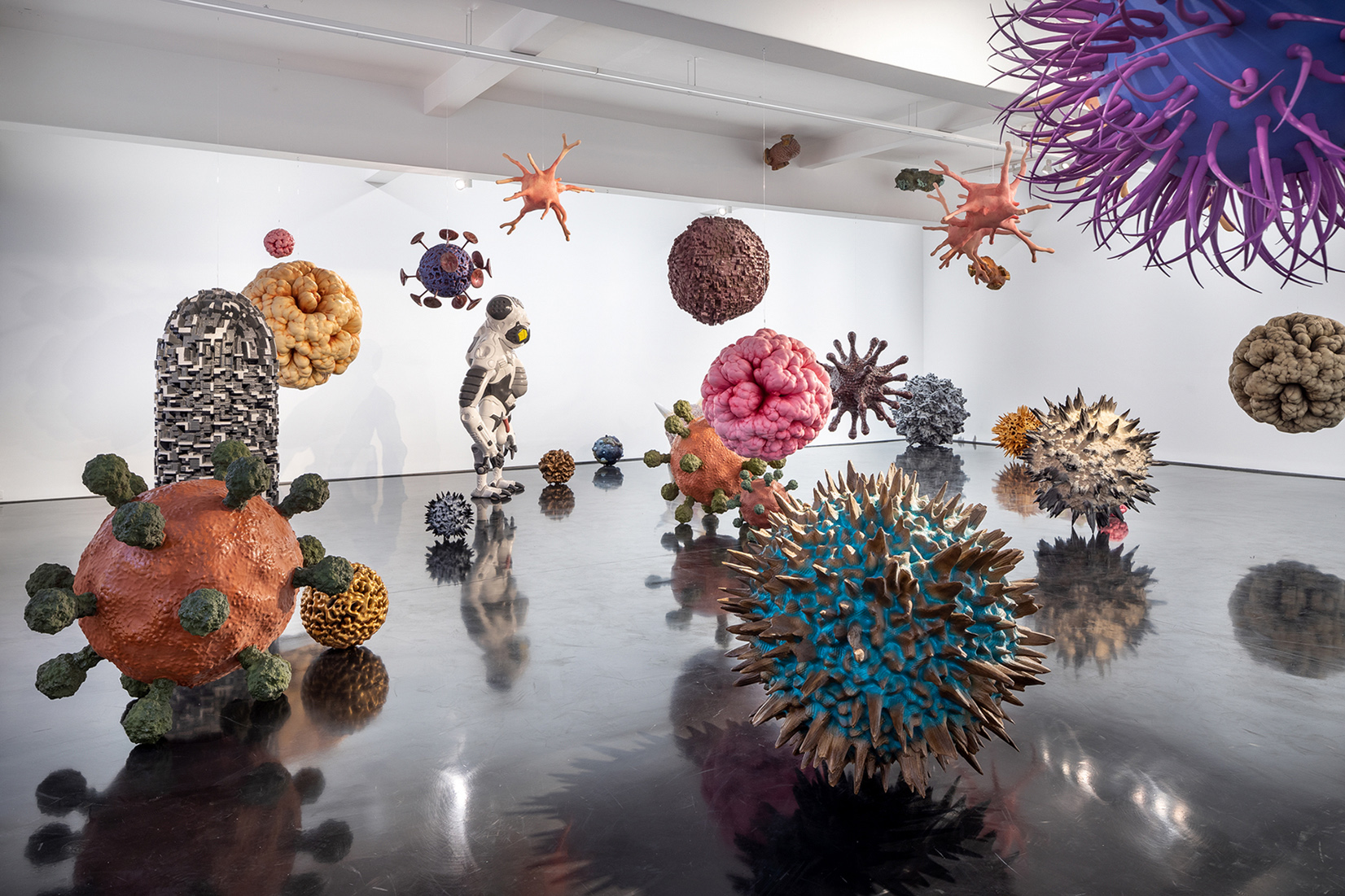
From NYC’s blighted metropolis of the 1970s to São Paulo, Brazil today, graffiti has served as a powerful visual tool for acknowledging, reclaiming and beautifying neglected urban spaces. In “Life as It Is,” an exhibit at San Francisco’s Ian Ross Gallery that opened last Wednesday, Brazilian artist Zezão brings that abandoned world into the gallery environment. Zezão, whose real name is José Augusto Amaro Capela, first began working as a graffiti artist during a period of personal depression in the 1990s when he was on the brink of homelessness. To escape from the world, he began exploring and painting in São Paulo’s underground sewer system. There, he both developed his signature blue calligraphic symbols, called “flops,” and befriended members of the disenfranchised population living underground. Now, Zezão’s artwork can be seen all over São Paulo, a city that is currently considered to be at the center of graffiti culture — a development that makes sense, given the degree of the city’s income inequality.
“Life as It Is” provides a stark visualization of the physical divisions that exists between the haves and the have-nots, not only in São Paulo, but in major cities everywhere, including the rapidly gentrifying San Francisco Bay Area. The exhibit is made up of several parts that are divided among three different worlds. In the world of the underground, Zezão has painted a site-specific mural in San Francisco’s sewer system. In the gallery, an installation in the atrium mimics the decrepit constructions of Brazil’s favela (or slum) neighborhoods, while new mixed media works are displayed in the gallery space. Lastly, on the gallery’s top floor, there is an abstract installation intended to evoke the flight of Brazil’s affluent class to high-rise buildings and the extreme disparity between the country’s rich and poor. In spite of this sobering economic and social reality, Zezão remains optimistic about the potential of art to bring about positive changes in society. He states, “I do believe that art has the power to transform and confront people. And that this confrontation hopefully makes them act towards good.”
“Life As It Is” will be on view at Ian Ross Gallery in San Francisco through December 5.














 Officially opening today,
Officially opening today,  This Thursday,
This Thursday, 
 In a major installation at Tolarno Galleries in Melbourne, Christopher Langton built his own immersive system of celestial bodies, robots, and organisms resembling viruses and fungi. “The hyperreal manifestation of Langton’s own recent experiences beset by life-threatening disease and infection, ‘Colony’ beckons us to consider that we are all multi-cellular symbiotic organisms, negotiating a precarious shared ecology,” the gallery says.
In a major installation at Tolarno Galleries in Melbourne, Christopher Langton built his own immersive system of celestial bodies, robots, and organisms resembling viruses and fungi. “The hyperreal manifestation of Langton’s own recent experiences beset by life-threatening disease and infection, ‘Colony’ beckons us to consider that we are all multi-cellular symbiotic organisms, negotiating a precarious shared ecology,” the gallery says.